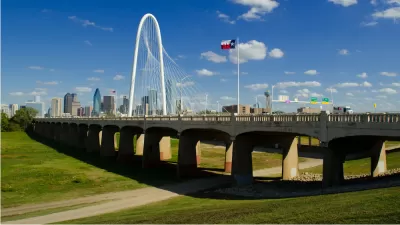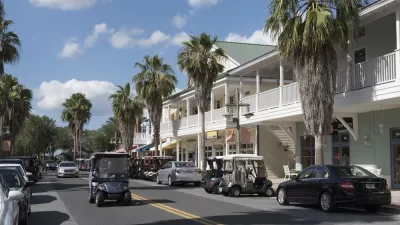Joel Kotkin and Alan M. Berger discuss their new book, which analyses what the suburbs are and will become, in both the United States and around the world.

A new book, Infinite Suburbia, edited by Joel Kotkin and Alan M. Berger, looks at suburbia from a variety of perspectives. At more than 700 pages, it is a collection of essays from the perspectives of architecture, planning, history, and transportation, to name a few. The Architect's Newspaper interviewed Kotkin and Berger about it.
In the interview, Kotkin is quoted:
"Two trends that may seem counterintuitive to urbanists have been the rapid pattern of diversification in suburbs, which now hold most of the nation’s immigrants and minorities, as well as the fact that suburbs are more egalitarian and less divided by class than core cities."
Kotkin and Berger point out that suburbs are not just diversifying, but that many U.S. central cities exhibit suburban land use patterns. Conversely, many cities around the world have suburbs with housing that is primarily multifamily and dense, a far cry from the transitional American single-family home and manicured lawn.
They point out that the future of suburbs will continue to be denser, but also more environmentally friendly. Suburbanites will demand fewer golf courses in the future and more public trails and common landscapes. They also believe autonomous cars will transform suburbia, and take strain off of transit systems so they can focus on improving service in urban cores rather than expanding outward in less efficient ways.
FULL STORY: What if Everything You Know About the Suburbs is Wrong?

Maui's Vacation Rental Debate Turns Ugly
Verbal attacks, misinformation campaigns and fistfights plague a high-stakes debate to convert thousands of vacation rentals into long-term housing.

Planetizen Federal Action Tracker
A weekly monitor of how Trump’s orders and actions are impacting planners and planning in America.

Chicago’s Ghost Rails
Just beneath the surface of the modern city lie the remnants of its expansive early 20th-century streetcar system.

Bend, Oregon Zoning Reforms Prioritize Small-Scale Housing
The city altered its zoning code to allow multi-family housing and eliminated parking mandates citywide.

Amtrak Cutting Jobs, Funding to High-Speed Rail
The agency plans to cut 10 percent of its workforce and has confirmed it will not fund new high-speed rail projects.

LA Denies Basic Services to Unhoused Residents
The city has repeatedly failed to respond to requests for trash pickup at encampment sites, and eliminated a program that provided mobile showers and toilets.
Urban Design for Planners 1: Software Tools
This six-course series explores essential urban design concepts using open source software and equips planners with the tools they need to participate fully in the urban design process.
Planning for Universal Design
Learn the tools for implementing Universal Design in planning regulations.
planning NEXT
Appalachian Highlands Housing Partners
Mpact (founded as Rail~Volution)
City of Camden Redevelopment Agency
City of Astoria
City of Portland
City of Laramie





























